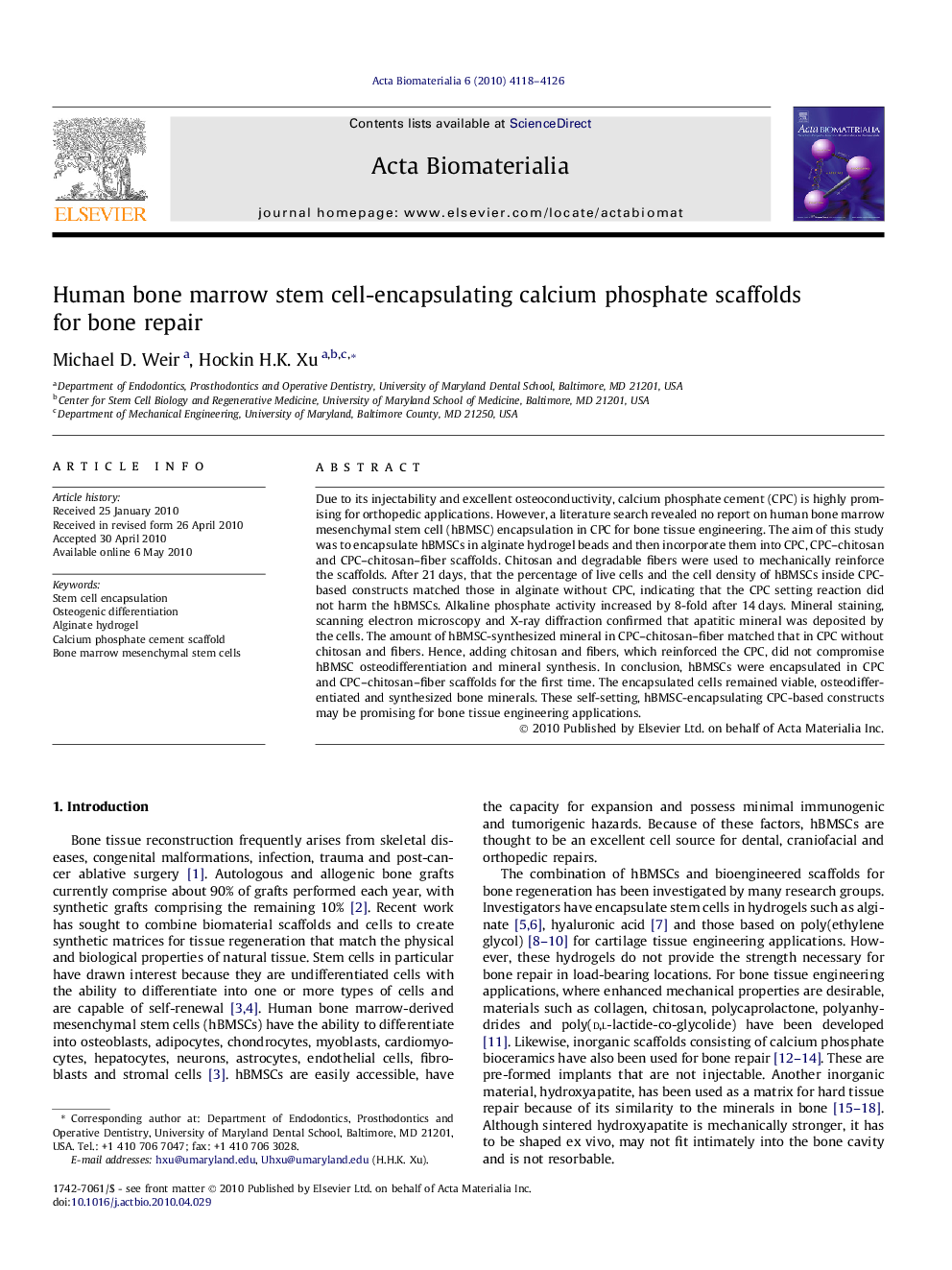| Article ID | Journal | Published Year | Pages | File Type |
|---|---|---|---|---|
| 1203 | Acta Biomaterialia | 2010 | 9 Pages |
Due to its injectability and excellent osteoconductivity, calcium phosphate cement (CPC) is highly promising for orthopedic applications. However, a literature search revealed no report on human bone marrow mesenchymal stem cell (hBMSC) encapsulation in CPC for bone tissue engineering. The aim of this study was to encapsulate hBMSCs in alginate hydrogel beads and then incorporate them into CPC, CPC–chitosan and CPC–chitosan–fiber scaffolds. Chitosan and degradable fibers were used to mechanically reinforce the scaffolds. After 21 days, that the percentage of live cells and the cell density of hBMSCs inside CPC-based constructs matched those in alginate without CPC, indicating that the CPC setting reaction did not harm the hBMSCs. Alkaline phosphate activity increased by 8-fold after 14 days. Mineral staining, scanning electron microscopy and X-ray diffraction confirmed that apatitic mineral was deposited by the cells. The amount of hBMSC-synthesized mineral in CPC–chitosan–fiber matched that in CPC without chitosan and fibers. Hence, adding chitosan and fibers, which reinforced the CPC, did not compromise hBMSC osteodifferentiation and mineral synthesis. In conclusion, hBMSCs were encapsulated in CPC and CPC–chitosan–fiber scaffolds for the first time. The encapsulated cells remained viable, osteodifferentiated and synthesized bone minerals. These self-setting, hBMSC-encapsulating CPC-based constructs may be promising for bone tissue engineering applications.
